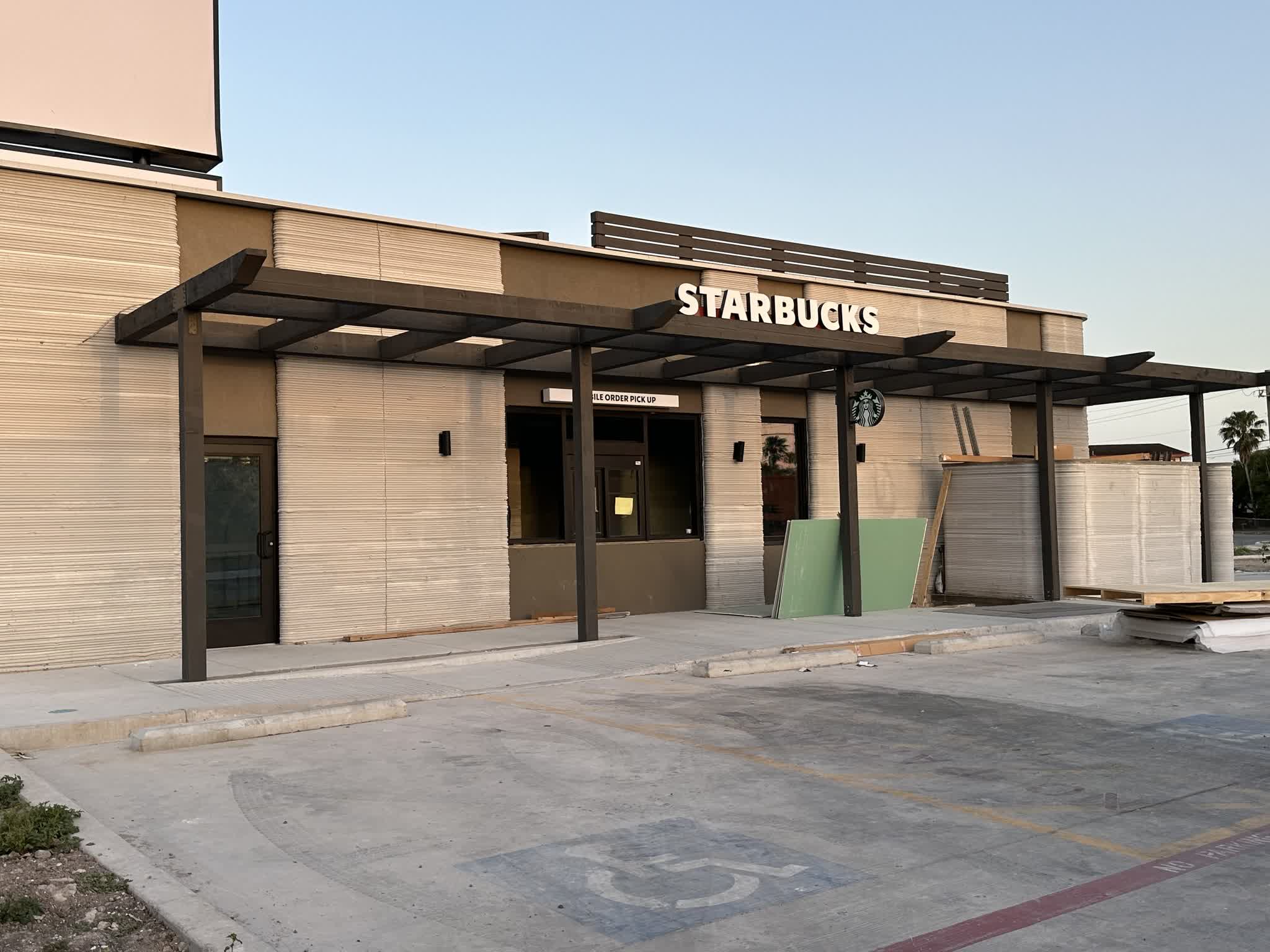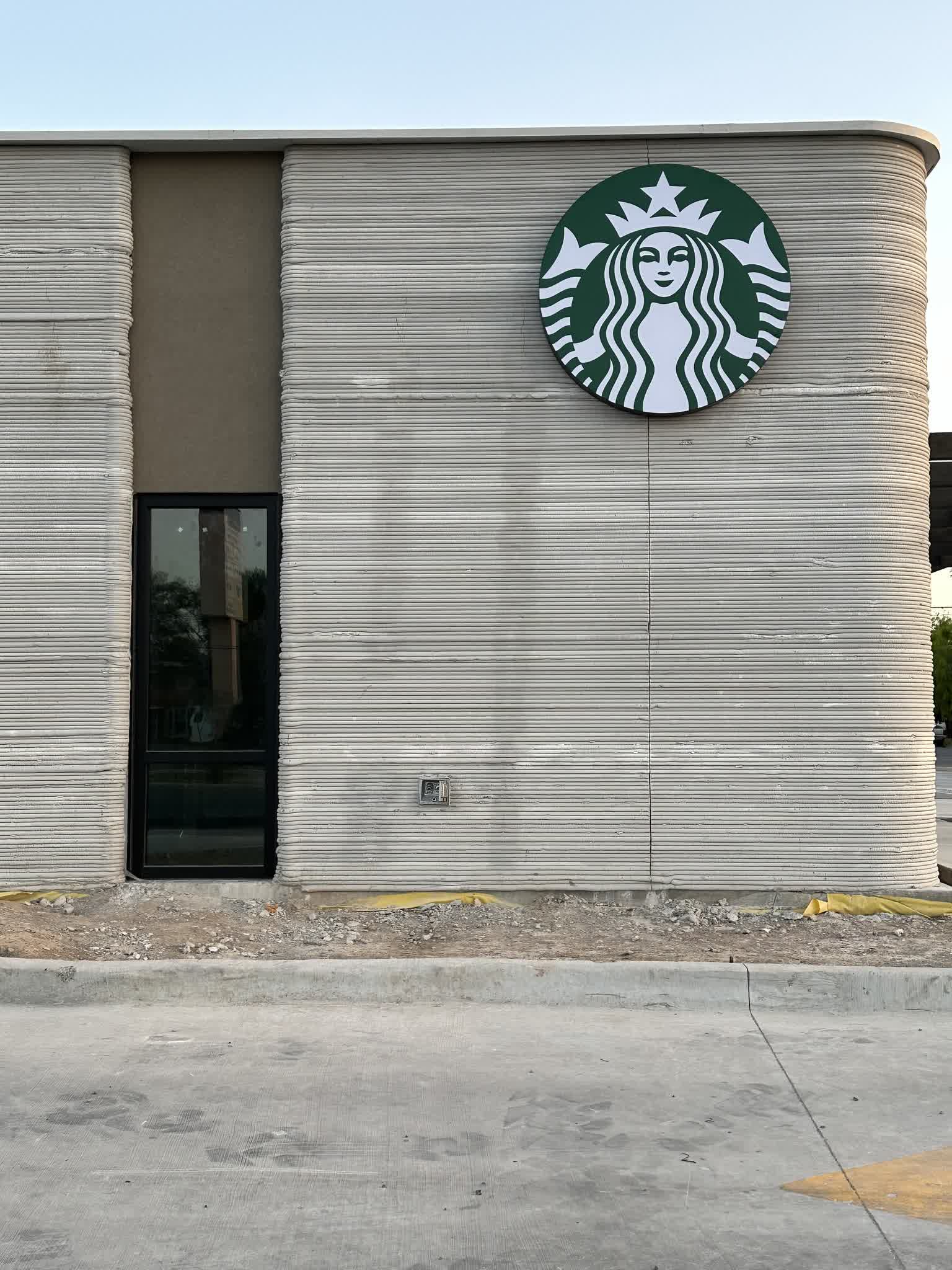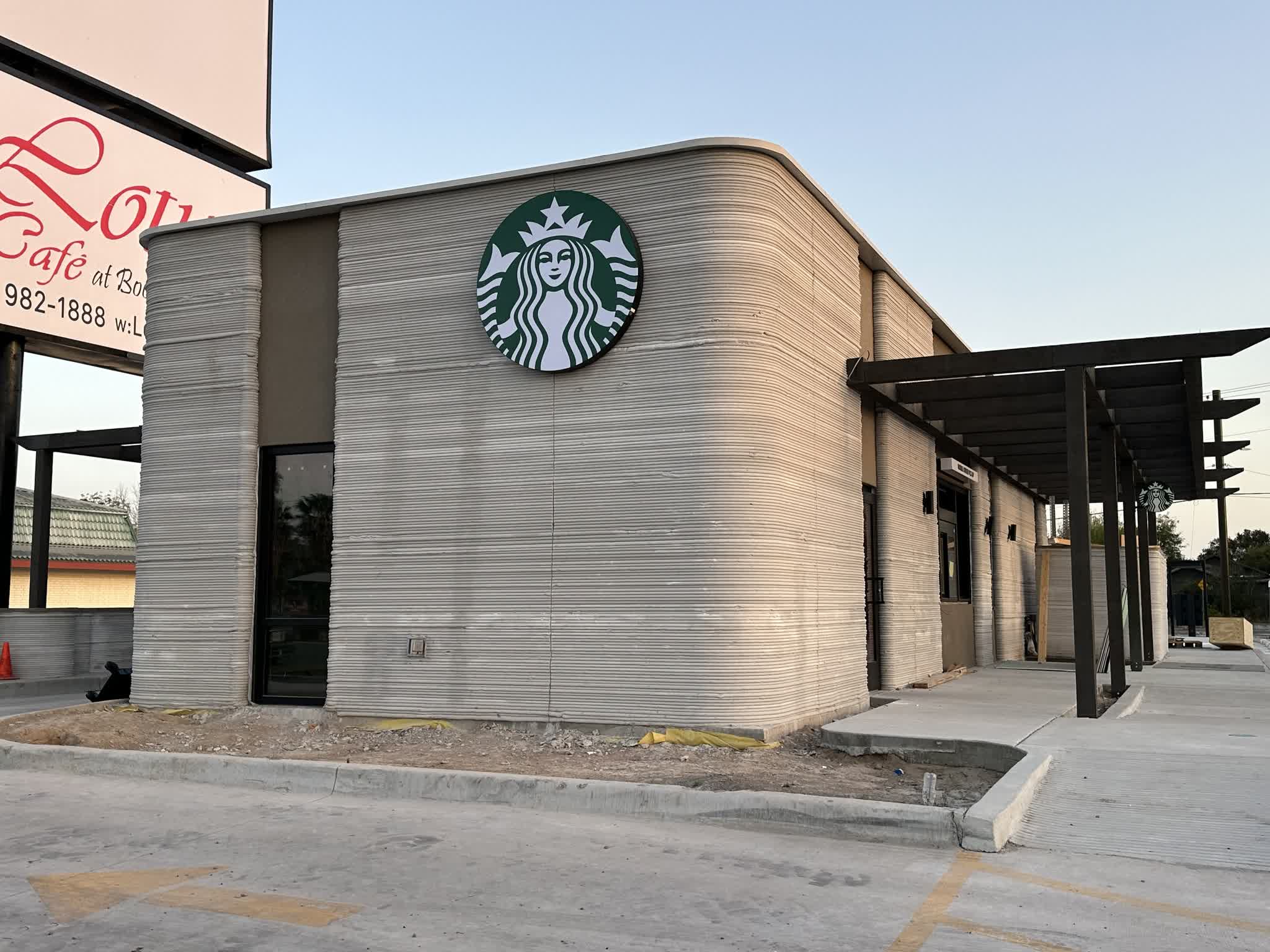The big picture: For years, companies have touted 3D printing as the future of construction, and now one of the strongest signs of the technology moving into the mainstream has arrived. Starbucks has unveiled its first 3D-printed store in Brownsville, Texas, demonstrating that major brands are willing to bet on greener, more innovative building methods.
Brownsville Today reports that the new Starbucks will open on Monday. Built with cutting-edge 3D printing technology, it's not the typical cozy shop where customers can sip coffee while they doom-scroll. Instead, the store caters to mobile order pickups and a drive-thru, with no indoor seating. At about 1,400 square feet, the compact space prioritizes speed and convenience over lingering with your drink.

New Atlas notes that Germany's Peri 3D Construction, the company behind Europe's largest 3D-printed building, led the project. The team started construction late last year using a Cobod BOD2 printer – a massive machine that extrudes a concrete-like material layer by layer. Once printing wrapped up, human crews installed windows, a porch, and all the finishing touches needed to transform the raw concrete shell into a fully functional coffee shop.
The telltale ribbed look at the Brownsville location – typical of 3D-printed structures – is immediately apparent. The walls proudly display their layered "birthmarks," though a closer look might reveal imperfections where the material shifted or didn't align perfectly. Some of that texture appears off in the images.

The Brownsville store is part of a growing trend. Large-scale 3D printing is rapidly expanding across the US, especially in Texas. Companies like Icon have already made headway with 3D-printed housing developments like Wolf Ranch. Cobod has also been busy, delivering more than 50 BOD2 printers worldwide over the past few years for everything from commercial buildings to research projects.
A 2023 licensing document initially pegged the budget for this particular Starbucks at around $1.2 million, but the final costs remain undisclosed. Regardless, big names like Starbucks increasingly recognize the potential in 3D-printed construction – faster builds, potentially lower costs, and a dash of futuristic flair.
Image credit: City of Brownsville
